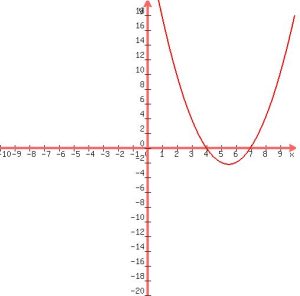Quadratic equations are pivotal in algebra, offering insights into various phenomena across disciplines such as physics, astronomy, economics, and even biology. The equation is a classic example, embodying the quintessential properties of quadratic forms. Its analysis not only enlightens us about specific solutions but also reveals broader mathematical concepts.
Table of Contents
Structure and Characteristics of Equation x2-11x+28=0
This quadratic equation falls under the standard form , where , , and are real numbers, and . In x2-11x+28=0:
- , showing the equation is a simple quadratic without a leading coefficient.
- , indicating the linear term’s influence on the curve’s shift and orientation.
- , the constant, affects the vertical translation of the quadratic graph.

Comprehensive Solving Techniques
Factoring Method: Factoring is often the most straightforward approach. It involves breaking down the quadratic into a product of binomials. In this case, finding two numbers that multiply to 28 (the constant term) and add up to -11 (the coefficient of ) leads to the factors and . Setting each factor equal to zero, we find the solutions: and .
Quadratic Formula: The quadratic formula, , is a universal solver for quadratic equations. Applying it to our equation, we calculate , leading to the same roots of and .
Completing the Square: This method involves rearranging the equation into a perfect square plus a constant. It’s a bit more complex but offers a deeper understanding of the equation’s geometry. For , this method also confirms the roots found by the other methods.

Graphical Insights
Plotting reveals a parabola opening upwards. This orientation is due to the positive coefficient of x. The vertex of the parabola provides the equation’s minimum value, and the roots (where the parabola crosses the x-axis) at and are key to understanding the equation’s real-world implications.
Diverse Applications
Quadratic equations are incredibly versatile:
- Physics: They model trajectories in projectile motion and the behavior of objects under uniform acceleration.
- Economics: Quadratics can represent various economic behaviors, like the relationship between supply, demand, and pricing.
- Engineering and Architecture: They assist in designing structures with specific stress and load requirements, like arches and bridges, using parabolic curves for optimal strength.
Also Read:
Conclusion
The equation is more than just a mathematical problem; it’s a gateway to understanding a range of natural and man-made phenomena. By dissecting this equation, we uncover fundamental principles that apply across numerous fields, demonstrating the universal language of mathematics.
FAQs
The solutions to the equation x2−11x+28=0 are x=4 and x=7. These solutions can be found using methods such as factoring, the quadratic formula, or completing the square.
To factor x2−11x+28=0, look for two numbers that multiply to 28 (the constant term) and add up to -11 (the coefficient of x). The numbers -4 and -7 fit these criteria, so the equation factors to (x−4)(x−7)=0.
Yes, the quadratic formula, x=2a−b±b2−4ac, can be used to solve x2−11x+28=0. By substituting b=−11, and c=28, the formula yields the solutions x=4 and x=7.
The graph of x2−11x+28=0 is a parabola that opens upwards. This is because the coefficient of x2 (a = 1) is positive. The roots of the equation, x=4 and x=7, are the points where the parabola intersects the x-axis.



